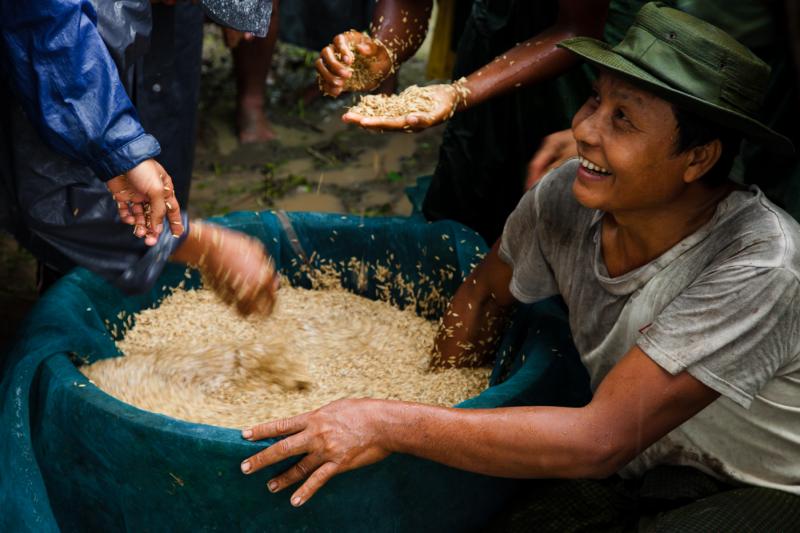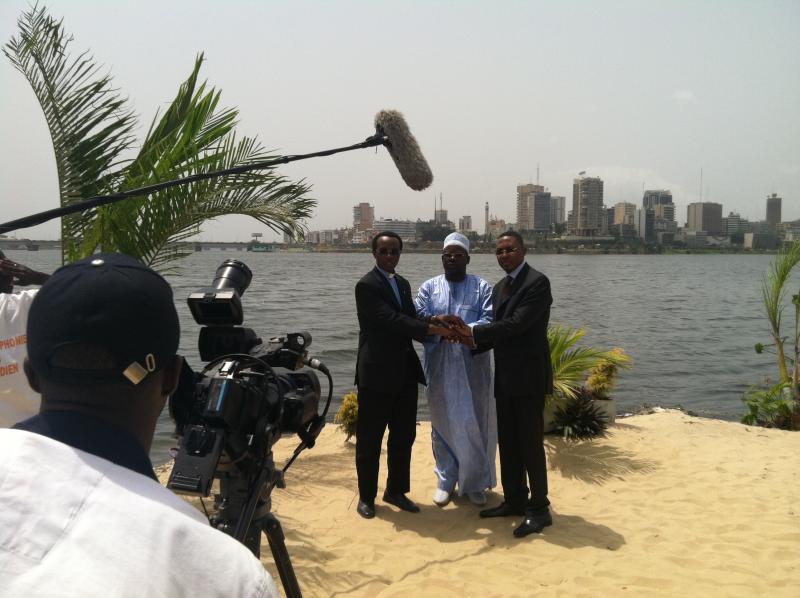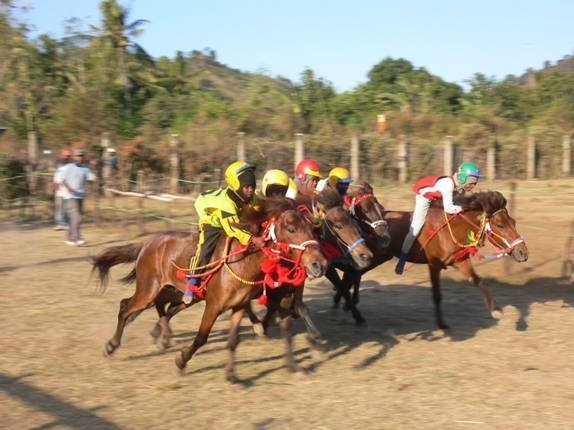How would you illustrate the often elusive concept of capacity development? The capacity4dev.eu photo competition drew entries from across the globe and reminded us of the wide interpretation given to this subject.
It also provided the welcome opportunity to see pictures and hear stories from capacity4dev.eu members working in the field. The three photographs finally chosen by the Coordination Team each illustrate a different perspective on capacity development, and introduce us to members of the capacity4dev.eu community.

A Burmese farmer sorts his rice seed using the salt-water-selection technique in Pyapon, Myanmar, during training by Proximity Designs.
By Tim Mitzman, Media and Communications Team Leader at Proximity Designs, Myanmar. Shot with a Canon 5d Mark II, 24-105mm f4 lens.
The Coordination Team chose this photo as we felt it highlighted individual empowerment through exposure to innovative practices and the value of social marketing through private sector and NGOs as mechanisms for the dissemination of ideas and practices.
“Salt-water seed selection is a technique that Proximity Designs has been teaching to low income farmers all over Myanmar," said Mr Mitzman. "Using a saline solution to sort the good seeds from the bad, it can boost rice yields by up to 16 baskets per acre and is one of the many knowledge based agro-techniques that Proximity has designed to help improve farmers’ lives and incomes. Proximity’s Farm Advisory Service also offers simple solutions for pest control, proper use of fertiliser, composting and crop choices.
“Proximity Designs is a non-profit design venture located in Myanmar and is a winner of this year’s Skoll Award for Social Entrepreneurship. We've been designing, making and distributing products and services for rural families since 2004. A nation-wide network of agents and dealers sells our products that dramatically increase incomes and positively impact rural economies throughout the country.
“My advice for taking good pictures? Let the emotion of the moment do the talking. Your camera and lens will only take you so far. And visit Myanmar! It's a beautiful place full of inspirational people.”

Filming a TV spot for the International Rescue Committee’s social marketing campaign ”Break the Silence” in Cote d’Ivoire.
By Virginia Williams, Social Marketing consultant and trainer.
The Coordination Team selected this photograph as it illustrates capacity through partnerships and building alliances. It also demonstrates the facilitation of change by an external party to broker new ways of working and then gradual withdrawal and local processes to take the lead.
“This is a photo taken during production of one of four TV spots for the International Rescue Committee's "Break the Silence" social marketing campaign to combat domestic violence in Cote d'Ivoire," said Ms Williams.
“In order to prepare the IRC staff of 35 men and women for the campaign, I conducted a week-long workshop that included the basics tenants of social marketing and social norms, how to conduct focus groups, create messages, reach audiences, and develop an implementation plan. This was an essential step in assuring that the entire team would be involved in the campaign from the start, and would be vested in the outcome. This also included the production team that created the TV spots, radio programs, posters and billboards participated, so that they too would be informed creators of the campaign.
“In this photo, Ivoirian Director Jean Noel Bah films the three religious leaders, left to right: l'Abbé Abékan (Catholic Priest), l'Imam Cissé Djiguiba (Muslim Imam), Rev. Raoul Waffo (Protestant Minister) who are promoting one of the messages of the campaign: "Nous sommes une équipe contre la violence”.
“The campaign is now in its fourth month, and events are being held all over the country. I have been monitoring the project remotely, feeling a little left out since it’s almost like I'm not needed anymore, but then that's the whole point of capacity development: planned obsolescence of the consultant/trainer!”

Child Jockeys, Sumbawa Island, Indonesia
By Jean–Baptiste Fauvel, Delegation of the EU to Burkina Faso (and formerly posted in Jakarta)
The Coordination Team selected this photograph as it shows that ownership and vision matter for change and capacity development. It also illustrates the need for investment in youth, as they are the leaders of tomorrow.
“To me, this is a vivid illustration of the values which are at the core of development," said Mr Fauvel.
“It's about capacity building and finding one's own way in life, modernity within tradition, since "pacuan kuda", i.e. horse racing, is a tradition in Sumbawa (there even are dedicated arenas). It’s also about living in harmony within one's environment.
“I believe this photo conveys a sense of hope, striving, going beyond one's limits, achievement. To me, it's just a booster shot of raw inspiration from a country which believes in and relies on its youth.”
Please visit the Public Group on Capacity Development and Technical Cooperation Reform.
This collaborative piece was drafted with input from capacity4dev.eu members Tim Mitzman, Virginia Williams, Tony Land and Jean-Baptiste Fauvel, with support from the capacity4dev.eu Coordination Team.

Log in with your EU Login account to post or comment on the platform.